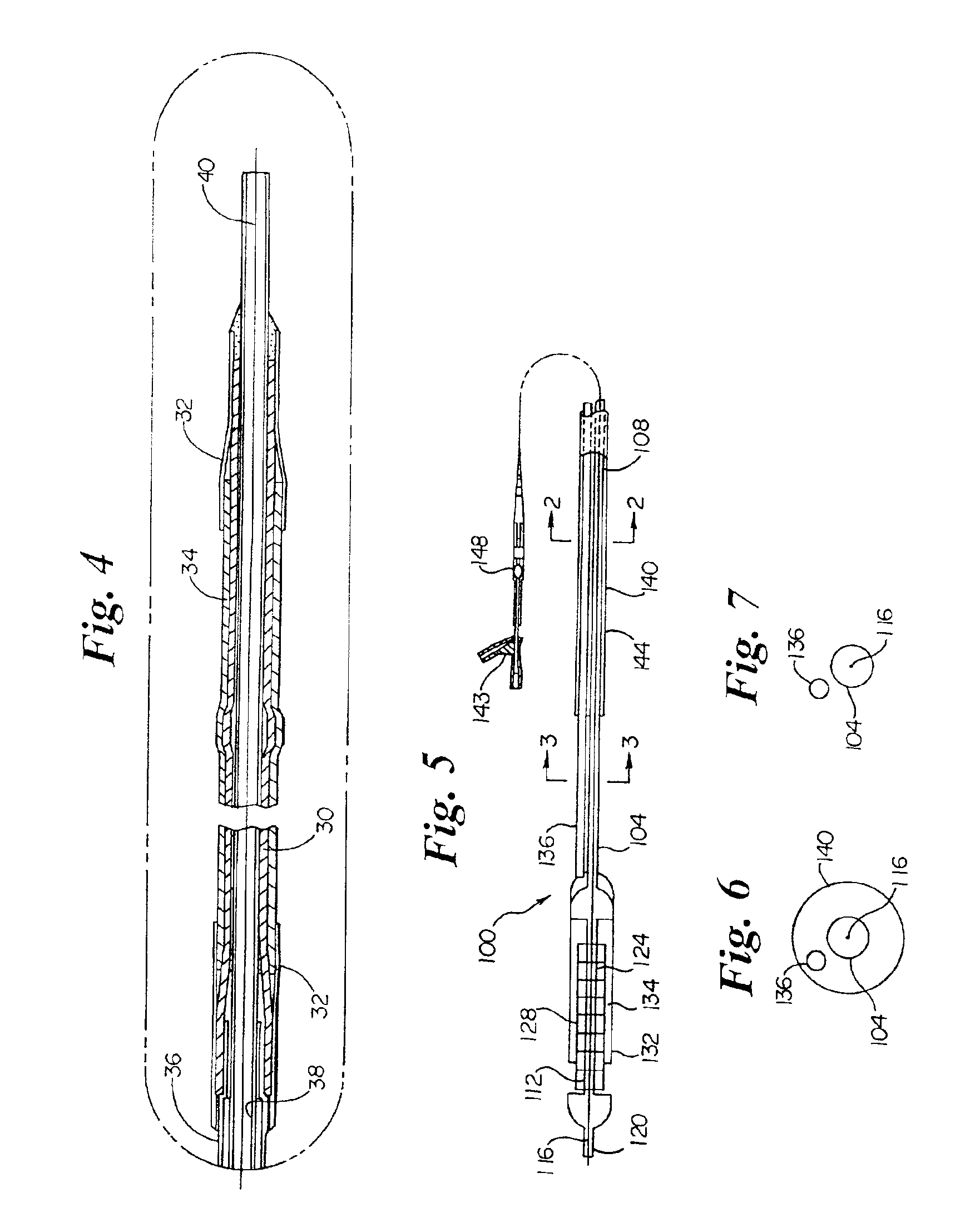Medical devices utilizing melt-processible poly(tetrafluoroethylene)
a technology of melt-processible polymer and medical devices, which is applied in the direction of mechanical devices, synthetic resin layered products, and catheters, etc., can solve the problems of not being able to be removed from molds, not being able to melt-process articles of useful mechanical properties, and not being able to use ptfe to melt-process articles, etc., to achieve good trackability of the device within the body, reduce friction, and facilitate the movement of parts
- Summary
- Abstract
- Description
- Claims
- Application Information
AI Technical Summary
Benefits of technology
Problems solved by technology
Method used
Image
Examples
Embodiment Construction
[0021]While this invention may be embodied in many different forms, there are described in detail herein specific embodiments of the invention. The present disclosure is an exemplification of the principles of the invention and is not intended to limit the invention to the particular embodiments illustrated.
[0022]The present invention refers to medical devices which are well known. As such, figures are not included since they are not necessary for one skill in the art to understand the invention. However, examples of medical devices referred to herein can be found in many patents. Examples of catheters may be found in U.S. Pat. Nos. 5,980,533, 5,534,007 and 5,833,706. Stent delivery systems may also be found in U.S. Pat. No. 5,702,364. It should also be understood that the present invention also applies to plain old balloon angioplasty (POBA) catheters.
[0023]The inventive medical systems disclosed herein may also be provided with any of the features disclosed in U.S. Pat. No. 6,096,...
PUM
| Property | Measurement | Unit |
|---|---|---|
| melt temperature | aaaaa | aaaaa |
| elongation to break | aaaaa | aaaaa |
| elongation to break | aaaaa | aaaaa |
Abstract
Description
Claims
Application Information
 Login to View More
Login to View More - R&D
- Intellectual Property
- Life Sciences
- Materials
- Tech Scout
- Unparalleled Data Quality
- Higher Quality Content
- 60% Fewer Hallucinations
Browse by: Latest US Patents, China's latest patents, Technical Efficacy Thesaurus, Application Domain, Technology Topic, Popular Technical Reports.
© 2025 PatSnap. All rights reserved.Legal|Privacy policy|Modern Slavery Act Transparency Statement|Sitemap|About US| Contact US: help@patsnap.com



